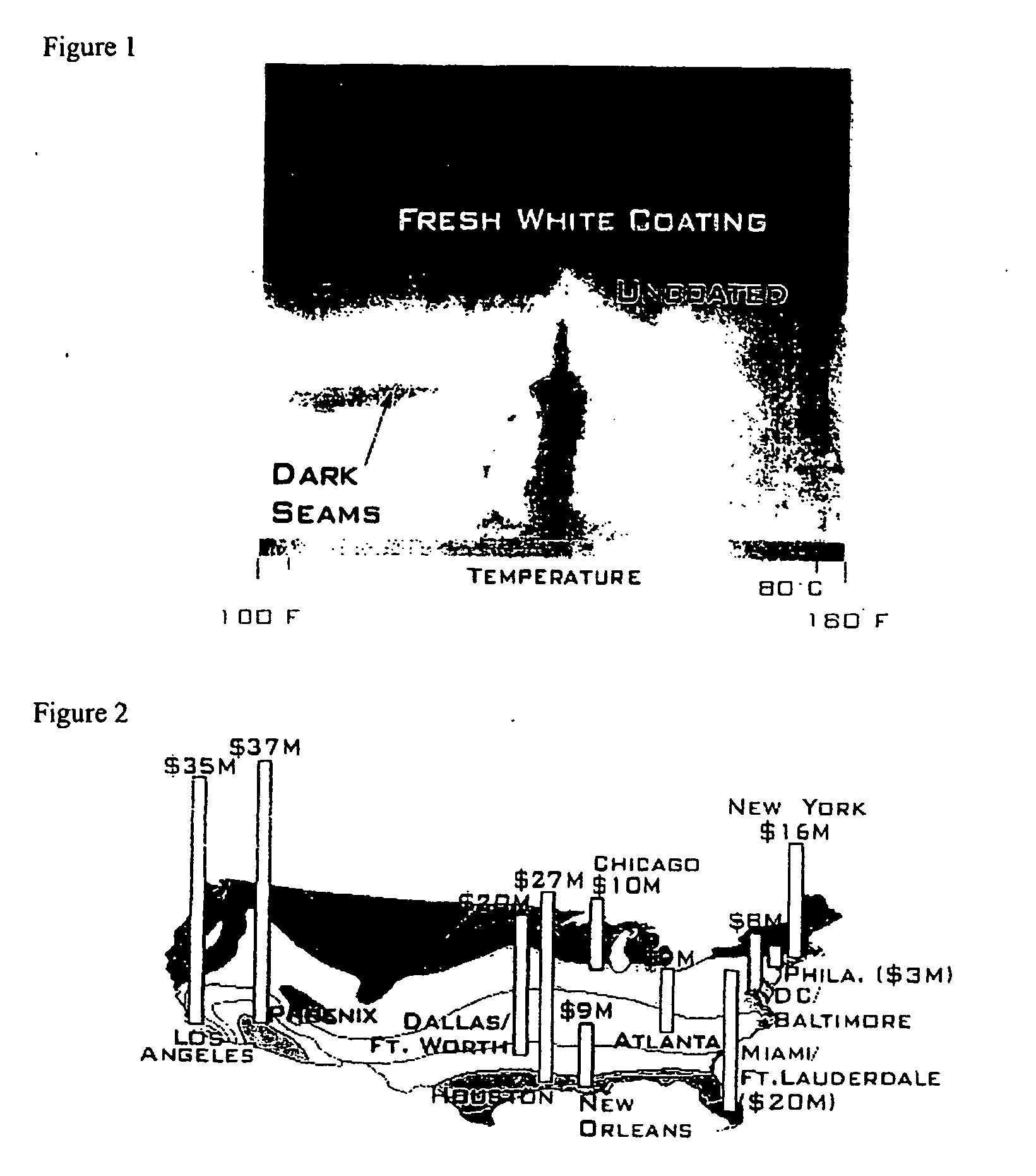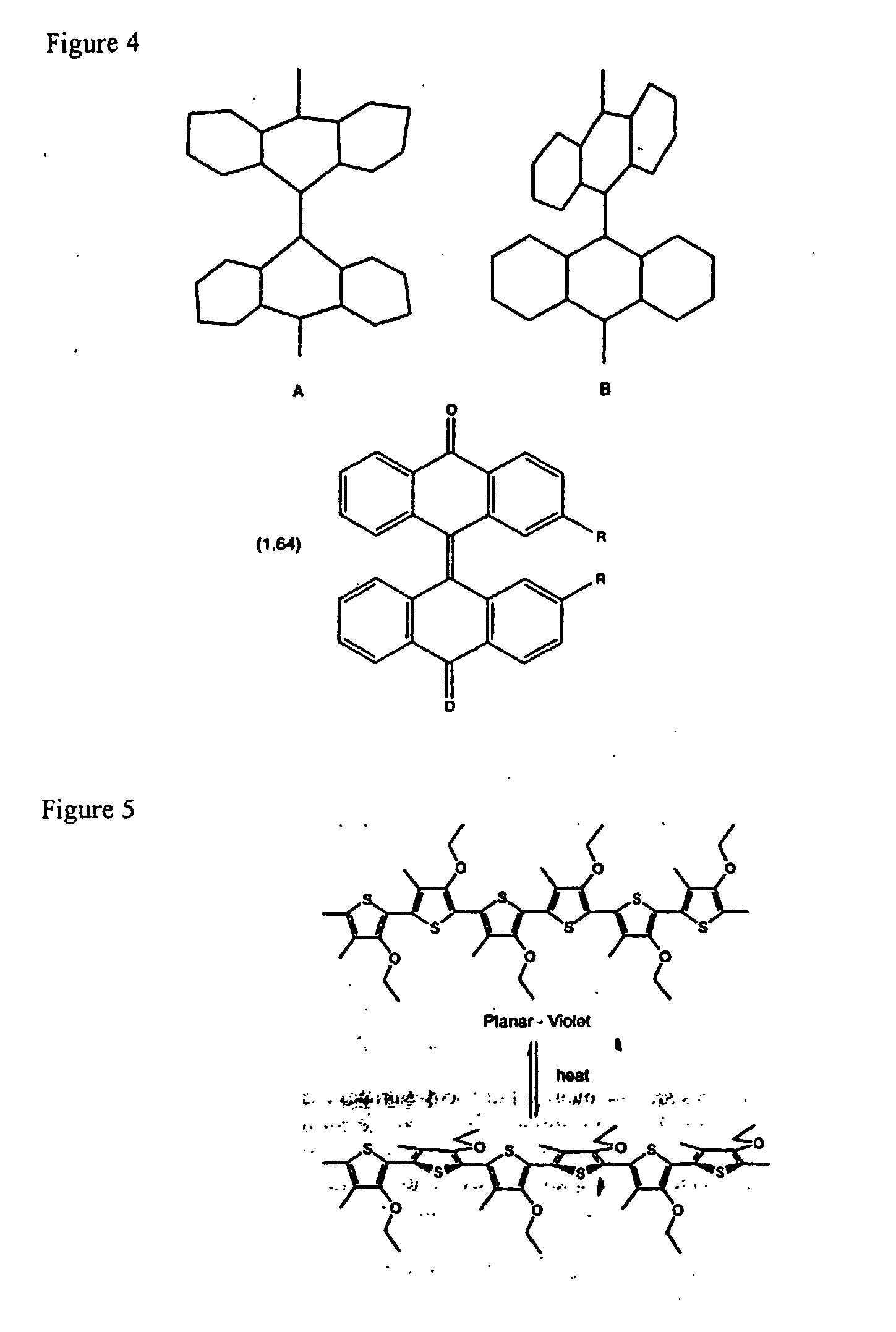System and method for energy-conserving roofing
a technology of energy-saving roof and roof plate, which is applied in the field of roof plate system, can solve the problems of no building technology in the market, inability to take advantage of cool roof, and inability to meet the needs of customers, so as to improve comfort, reduce energy consumption, and save energy
- Summary
- Abstract
- Description
- Claims
- Application Information
AI Technical Summary
Benefits of technology
Problems solved by technology
Method used
Image
Examples
Embodiment Construction
1. Thermochromic Coatings
A thermochromic coating is a coating that changes color in response to heat. At a specific temperature point a thermochromic material will change its color, that is, the wavelengths of light that it absorbs and reflects. The actual mechanism used to change color varies depending upon the material in question. There are several different methods for achieving the desired thermochromic effect. Each method has specific environmental and application specifications and involves different materials.
Intrinsically Thermochromic Materials
Some materials are intrinsically thermochromic and are therefore very easy to use in a coating. Cholesteric liquid crystals, a supra-molecular system, are among the most commonly used intrinsically thermochromic materials because of their ability to change color at low temperatures.
All that would be required is to add such materials to a carrier that does not chemically interact with them, thus preserving their thermochromic...
PUM
| Property | Measurement | Unit |
|---|---|---|
| temperature | aaaaa | aaaaa |
| energy reflectance | aaaaa | aaaaa |
| temperatures | aaaaa | aaaaa |
Abstract
Description
Claims
Application Information
 Login to View More
Login to View More - R&D
- Intellectual Property
- Life Sciences
- Materials
- Tech Scout
- Unparalleled Data Quality
- Higher Quality Content
- 60% Fewer Hallucinations
Browse by: Latest US Patents, China's latest patents, Technical Efficacy Thesaurus, Application Domain, Technology Topic, Popular Technical Reports.
© 2025 PatSnap. All rights reserved.Legal|Privacy policy|Modern Slavery Act Transparency Statement|Sitemap|About US| Contact US: help@patsnap.com



